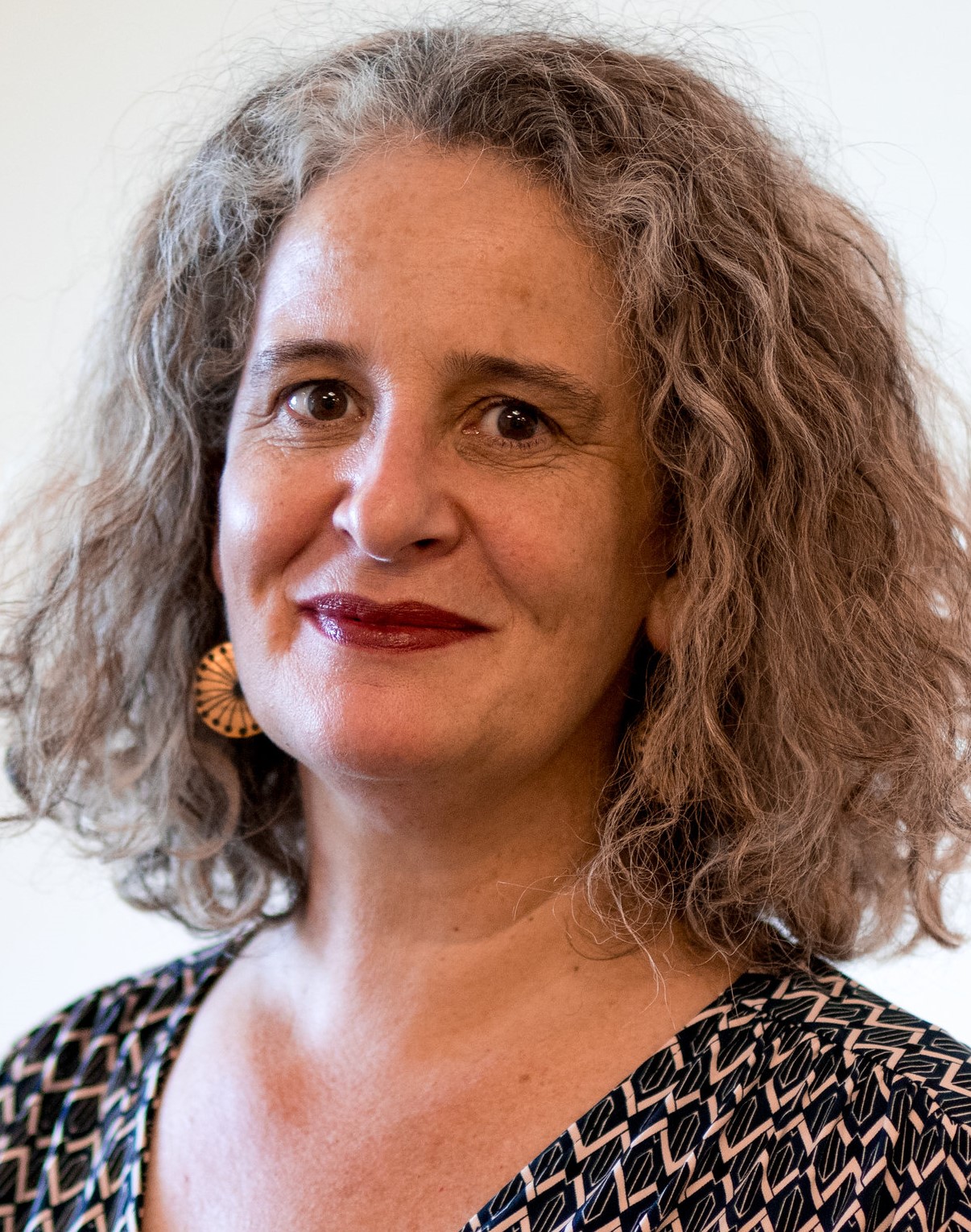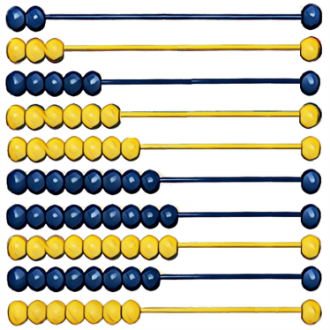The ABACUS group
-
Project Leader

A/Prof Carolyn Nickson
Project Details

The ABACUS group, headed by A /Prof Carolyn Nickson, is focussed on three overlapping research streams that aim to reduce the burden of breast cancer:
- Policy, evaluation and implementation studies about existing health services for breast cancer
- The development and validation of breast cancer risk assessment tools, for accurate population-level risk assessment, advice and management to assist with early detection of breast cancer
- Clinical and health economic modelling of the benefits, harms and costs of various risk-based approaches to breast cancer screening, diagnosis and treatment
Our research team is jointly appointed as the Breast Cancer Policy and Evaluation stream at the Daffodil Centre (a joint venture between Cancer Council NSW and the University of Sydney).
The ABACUS group collaborates widely with clinicians, health service providers, health care consumers and research organisations.
Selected current projects
- The ROSA project funded by the Australian Department of Health and Aged Care is working towards evidence-based consensus on optimal pathways for risk-based approaches for the early detection of breast cancer, for women at all levels of breast cancer risk.
- The Breast Risk Assessment in Victoria (BRAVO) project in collaboration with BreastScreen Victoria aims to better understand the feasibility, costs, and acceptability of routine risk assessment within the BreastScreen Victoria program.
- Clinical and health economic modelling of population-wide screening protocols using the Policy1-Breast model (part of the Daffodil Centre suite of cancer screening and prevention models). This includes for example government-commissioned modelling to estimate the impact of the COVID-19 pandemic on BreastScreen services.
- Collaborative research projects with the Breast Service of the Royal Women’s & Melbourne Hospitals, in particular exploring the use of Contrast-Enhanced Mammography in breast cancer diagnosis and surveillance post-treatment.
- Investigating the cost-effectiveness of 3D DBT compared to other imaging technologies in clinical settings as part of an MRFF funded project led by the University of Sydney.
- Producing projections of breast cancer incidence and treatment patterns for the next 5 years, as part of an MRFF funded project Cancer-Patient Population Projections led by the Daffodil Centre. The study includes the analysis of large datasets aimed at estimating differences in treatment and costs among the most common types of breast cancer.
- Assessment of how small, non-inheritable gene changes (somatic mosaicism) in blood cells can be used to measure cancer risk, as part of an MRFF project led by the Peter McCallum Cancer Centre.
- Comparison of mammographic breast density measurements in terms of predicting (i) breast cancer risk, (ii) the sensitivity and specificity of mammographic screening, and (iii) the impact of any improvements in risk assessment on clinical and health economic outcomes of risk-based screening. This includes the AutoDensity tool developed by our team in collaboration with CSIRO.
- Along with general epidemiological analyses of health outcomes in the lifepool cohort, the development and validation of breast cancer risk assessment tools that incorporate questionnaire, mammographic breast density and genetic information, using machine learning approaches to optimise use of available information. This has included validation of the Gail model on the Australian lifepool cohort and application machine learning methods, with ongoing work in collaboration with researchers from the Peter McCallum Cancer Centre and Daffodil Centre, University of Sydney.
Researchers
- Dr Louiza Velentzis(deputy team leader, epidemiologist)
- Dr Pietro Procopio(data analyst, modeller, image analyst)
- Dr Lara Petelin(health economist and modeller)
- Dr Sabine Deij(data analyst and health economist)
- Dr Saima Islam (statistician and epidemiologist)
- Dr Jennifer Cauchi (research coordinator)
ABACUS group members are jointly appointed at the University of Melbourne and the Daffodil Centre (through either honorary or direct appointments).
A/Prof Carolyn Nickson (team leader, epidemiologist)
Funding
Australian Government Department of Health and Aged Care (ADHAC)
Medical Research Future Fund (MRFF)
Daffodil Centre / Cancer Council NSW
Royal Melbourne and Royal Women’s Hospitals
Research Publications
Carle C, Velentzis LS, Nickson C. BreastScreen Australia national data by factors of interest for risk-based screening: routinely reported data and opportunities for enhancement. Aust N Z J Public Health 2022 V46(2):230-236. doi: 10.1111/1753-6405.13203
Yap S, Vassallo A, Goldsbury DE, Salagame U, Velentzis L, Banks E, O'Connell DL, Canfell K, Steinberg J. Accurate categorisation of menopausal status for research studies: a step-by-step guide and detailed algorithm considering age, self-reported menopause and factors potentially masking the occurrence of menopause. BMC Res Notes. 2022;15(1):88. doi: 10.1186/s13104-022-05970-z
Islam S, Velentzis LS, Procopio P, Hughes S,Nickson C (2022). Reporting cancer recurrence of primary invasive breast cancer by clinicopathological characteristics - a review. In NSW Cancer Conference 2022, Sydney, Australia
Bulliard JL, Beau AB, Njor S, Wu WY, Procopio P, Nickson C, Lynge E. Breast cancer screening and overdiagnosis. Int J Cancer. 2021;10.1002/ijc.33602. doi:10.1002/ijc.33602
Velentzis LS, Egger S, Banks E, Canfell K. Menopausal hormone therapy: Characterising users in an Australian national cross-sectional study. PLoS One. 2021 Aug11;16(8): e0253725. doi: 10.1371/journal.pone.0253725
Petelin L, Trainer AH. 2021. Exploring gene-specific guidelines for risk management of gynecological cancer in Lynch syndrome. JAMA Netw Open. 2021; 4(9): e2124384. doi:10.1001/jamanetworkopen.2021.24384
Saxby K, Nickson C, Mann GB, Park L, Bromley H, Velentzis L, Procopio P, Canfell K, Petrie D. Moving beyond the stage: how characteristics at diagnosis dictate treatment and treatment-related quality of life year losses for women with early stage invasive breast cancer. Expert Rev Pharmacoecon Outcomes Res. 2021; 1-11. doi: 10.1080/14737167.2021.1857735
Saxby K, Nickson C, Mann GB, Velentzis L, Bromley HL, Procopio P, Canfell K, Petrie D. The financial impact of a breast cancer detected within and outside of screening: lessons from the Australian Lifepool cohort. Aust N Z J Public Health. 44 (3). 2020 Apr 20: 219-226
Bromley HL, Mann GB, Petrie D, Nickson C, Rea D, Roberts TE. Valuing preferences for treating screen detected ductal carcinoma in situ. Eur J Cancer. 2019 Dec; 123:130-137
Dench E, Bond-Smith D, Darcey E, Lee G, Aung YK, Chan A, Cuzick J, Ding ZY, Evans CF, Harvey J, Highnam R, Hsieh MK, Kontos D, Li S, Mariapun S, Nickson C, Nguyen TL, Pertuz S, Procopio P, Rajaram N, Repich K, Tan M, Teo SH, Trinh NH, Ursin G, Wang C, Dos-Santos-Silva I, McCormack V, Nielsen M, Shepherd J, Hopper JL, Stone J. Measurement challenge: protocol for international case-control comparison of mammographic measures that predict breast cancer risk. BMJ Open. 2019 Dec 31;9(12)
Nickson C, Velentzis LS, Brennan P, Mann GB, Houssami N. Improving breast cancer screening in Australia: a public health perspective. Public Health Res Pract. 2019 Jul 31;29(2)
Lew JB, Feletto E, Wade S, Caruana M, Kang YJ, Nickson C, Simms KT, Procopio P, Taylor N, Worthington J, Smith D, Canfell K. Benefits, harms and cost-effectiveness of cancer screening in Australia: an overview of modelling estimates. Public Health Res Pract. 2019 Jul 31;29(2). pii: 29121913. doi: 10.17061/phrp2921913. PubMed PMID: 31384886
Nickson C, Velentzis LS, Brennan P, Mann GB, Houssami N. Improving breast cancer screening in Australia: a public health perspective. Public Health Res Pract. 2019 Jul 31;29(2). pii: 2921911. doi: 10.17061/phrp2921911. PubMed PMID: 31384884
Li T, Tang L, Gandomkar Z, Heard R, Mello-Thoms C, Xiao Q, Gu Y, Di G, Nickson C, Shao Z, Brennan P. Characteristics of Mammographic Breast Density and Associated Factors for Chinese Women: Results from an Automated Measurement. J Oncol. 2019 Mar 19;2019:4910854. doi: 10.1155/2019/4910854. eCollection 2019. PubMed PMID: 31015834; PubMed Central PMCID: PMC6444251
Bromley HL, Petrie D, Mann GB, Nickson C, Rea D, Roberts TE. Valuing the health states associated with breast cancer screening programmes: A systematic review of economic measures. Soc Sci Med. 2019 May; 228:142-154. doi: 10.1016/j.socscimed.2019.03.028. Epub 2019 Mar 21. Review. PubMed PMID: 30913528
Cheasley D, Li N, Rowley SM, Elder K, Mann GB, Loi S, Savas P, Goode DL, Kader T, Zethoven M, Semple T, Fox SB, Pang JM, Byrne D, Devereux L, Nickson C, Procopio P, Lee G, Hughes S, Saunders H, Fujihara KM, Kuykhoven K, Connaughton J, James PA, Gorringe KL, Campbell IG. Molecular comparison of interval and screen-detected breast cancers. J Pathol. 2019 Jun;248(2):243-252. doi: 10.1002/path.5251. Epub 2019 Mar 8. PubMed PMID: 30746706
Nickson C, Procopio P, Velentzis LS, Carr S, Devereux L, Mann GB, James P, Lee G, Wellard C, Campbell I. Prospective validation of the NCI Breast Cancer Risk Assessment Tool (Gail Model) on 40,000 Australian women. Breast Cancer Res. 2018 Dec 20;20(1):155. doi: 10.1186/s13058-018-1084-x. PubMed PMID: 30572910; PubMed Central PMCID: PMC6302513
Mann GB, Nickson C, Elder K. Treatment Intensity Differences According to Participation in a Population Screening Program. Ann Surg Oncol. 2019 Feb;26(2):698-699. doi: 10.1245/s10434-018-07113-w. Epub 2018 Dec 18. PubMed PMID: 30565041
Elder K, Nickson C, Mann GB. ASO Author Reflections: Impact of Breast Cancer Screening Beyond Mortality Reductions. Ann Surg Oncol. 2018 Dec;25(Suppl 3):687-688. doi: 10.1245/s10434-018-7001-9. Epub 2018 Nov 9. PubMed PMID: 30414033
Tavakoli Taba S, Baran P, Lewis S, Heard R, Pacile S, Nesterets YI, Mayo SC, Dullin C, Dreossi D, Arfelli F, Thompson D, McCormack M, Alakhras M, Brun F, Pinamonti M, Nickson C, Hall C, Zanconati F, Lockie D, Quiney HM, Tromba G, Gureyev TE, Brennan PC. Toward Improving Breast Cancer Imaging: Radiological Assessment of Propagation-Based Phase-Contrast CT Technology. Acad Radiol. 2019 Jun;26(6): e7-e89. doi: 10.1016/j.acra.2018.07.008. Epub 2018 Aug 25. PubMed PMID: 30149975
Elder K, Nickson C, Pattanasri M, Cooke S, Machalek D, Rose A, Mou A, Collins JP, Park A, De Boer R, Phillips C, Pridmore V, Farrugia H, Bruce Mann G. Treatment Intensity Differences After Early-Stage Breast Cancer (ESBC) Diagnosis Depending on Participation in a Screening Program. Ann Surg Oncol. 2018 Sep;25(9):2563-2572. doi: 10.1245/s10434-018-6469-7. Epub 2018 May 1. PubMed PMID: 29717421
Pattanasri M, Elder K, Nickson C, Cooke S, Machalek D, Rose A, Mou A, Collins JP, Park A, De Boer R, Phillips C, Pridmore V, Farrugia H, Mann GB. Uptake of adjuvant breast cancer treatments recommended by multi-disciplinary meetings. ANZ J Surg. 2018 Jan 23. doi: 10.1111/ans.14368. [Epub ahead of print] PubMed PMID: 29363225
Selected Reports to Government
Nickson C, Procopio P, Deij S, Velentzis L. COVID-19 scenario modelling for cancer screening programs: The BreastScreen Australia Program. May 2020
Nickson C, Hughes S, Campbell D, Freeman V, Carle C, Velentzis L, Procopio P, Deij S, Grogan P. Canfell K. for Cancer Council Australia. Optimising Early Detection of Breast Cancer in Australia: Phase II Interim Report. May 2020
Nickson C, Morgan A, Hughes S, Freeman V, Carle C, Velentzis L. Grogan P. Canfell K. for Cancer Council Australia. Summaries of Evidence: Australian screening outcomes by risk groups; Risk assessment; Mammographic breast density and screening outcomes; Overdiagnosis by risk group; Alternative screening modalities by risk group; Costs, benefits and harms of risk-based breast cancer screening: modelling studies; Potentially valuable data reports. Optimising Early Detection of Breast Cancer in Australia. August 2019
Nickson C, Morgan A, Velentzis L. Grogan P. Canfell K. for Cancer Council Australia. Environmental Scan - Clinical Services. Optimising Early Detection of Breast Cancer in Australia. August 2019
Nickson C, Morgan A, Grogan P. Canfell K. for Cancer Council Australia. Stakeholder Report. Optimising Early Detection of Breast Cancer in Australia. November 2019
Nickson C, Grogan P. Canfell K. for Cancer Council Australia Cancer Council Australia’s roadmap to evaluate, and potentially implement, more risk-based, personalised approaches to breast cancer detection and screening. Optimising Early Detection of Breast Cancer in Australia. August 2019
Nickson C, Lockie D, Petrie D, Clemson M, Munro J. Assessment of Return on Investment from using Tomosynthesis (DBT) in BreastScreen Assessment: Interim Report to the Department of Health and Human Services. 17 August 2016
Lockie D, Nickson C, Aitken Z. Evaluation of Digital Breast Tomosynthesis (DBT) in an Australian BreastScreen post-screening assessment service: A report for the Victorian Department of Health and BreastScreen Victoria. 1 May 2014
Research Group
Faculty Research Themes
School Research Themes
Data science, health metrics and disease modeling, Prevention and management of non-communicable diseases (including cancer), and promotion of mental health, Screening and early detection of disease
Key Contact
For further information about this research, please contact the research group leader.
Department / Centre
Centre for Epidemiology and Biostatistics
MDHS Research library
Explore by researcher, school, project or topic.